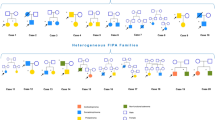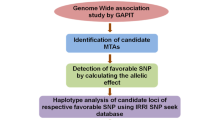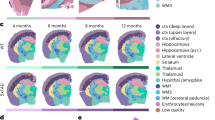Abstract
Finnish gelsolin amyloidosis (AGel amyloidosis) is an autosomal dominantly inherited systemic disorder with ophthalmologic, neurologic and dermatologic symptoms. Only the gelsolin (GSN) c.640G>A variant has been found in the Finnish patients thus far. The purpose of this study was to examine whether the Finnish patients have a common ancestor or whether multiple mutation events have occurred at c.640G, which is a known mutational hot spot. A total of 79 Finnish AGel amyloidosis families including 707 patients were first discovered by means of patient interviews, genealogic studies and civil and parish registers. From each family 1-2 index patients were chosen. Blood samples were available from 71 index patients representing 64 families. After quality control, SNP array genotype data were available from 68 patients from 62 nuclear families. All the index patients had the same c.640G>A variant (rs121909715). Genotyping was performed using the Illumina CoreExome SNP array. The homozygosity haplotype method was used to analyse shared haplotypes. Haplotype analysis identified a shared haplotype, common to all studied patients. This shared haplotype included 17 markers and was 361 kb in length (GRCh37 coordinates 9:124003326–124364349) and this level of haplotype sharing was found to occur highly unlikely by chance. This GSN haplotype ranked as the largest shared haplotype in the 68 patients in a genome-wide analysis of haplotype block lengths. These results provide strong evidence that although there is a known mutational hot spot at GSN c.640G, all of the studied 62 Finnish AGel amyloidosis families are genetically linked to a common ancestor.
Similar content being viewed by others
Log in or create a free account to read this content
Gain free access to this article, as well as selected content from this journal and more on nature.com
or
References
Meretoja J, et al. Familial systemic paramyloidosis with lattice dystrophy of the cornea, progressive cranial neuropathy, skin changes and various internal symptoms. A previously unrecognized heritable syndrome. Ann Clin Res 1969;1(4):314–24
Kiuru S. Familial amyloidosis of the Finnish type (FAF). Acta Neurol Scand 1992;86(4):346–53.
Meretoja J. Suomalainen amyloiditauti (the Finnish amyloid disease representing our disease inheritage). J Finn Med Assoc 1976;31:2234–6.
Norio R. Suomineidon geenit. Keuruu, Finland: Otava, 2000.
Kiuru-Enari S, Haltia M. Hereditary gelsolin amyloidosis. In: Said G, Krarup C (eds). Peripheral Nerve Disorders, Volume 115: Handbook of Clinical Neurology. Amsterdam: Elsevier; 2013. p. 659–81.
Gonzalez-Rodriguez J, Ramirez-Miranda A, Hernandez-Da Mota SE, Zenteno JC. TGFBI, CHST6, and GSN gene analysis in Mexican patients with stromal corneal dystrophies. Graefes Arch Clin Exp Ophthalmol 2014;252(8):1267–72.
Caress JB, Johnson JO, Abramzon YA, Hawkins GA, Gibbs JR, Sullivan EA, et al. Exome sequencing establishes a gelsolin mutation as the cause of inherited bulbar‐onset neuropathy. Muscle Nerve 2016;56:1001–5.
Spuler S, Emslie‐Smith A, Engel AG. Amyloid myopathy: an underdiagnosed entity. Ann Neurol 1998;43(6):719–28.
Felix EPV, Jung LS, Carvalho GS, Oliveira ASB. Corneal lattic dystrophy type II: familial amyloid neuropathy type IV (gelsolin amyloidosis). Einstein 2008;6:505–6.
Solari HP, Ventura MP, Antecka E, Belfort Junior R, Burnier Jr MN. Danish type gelsolin-related amyloidosis in a Brazilian family: case reports. Arq Bras Oftalmol 2011;74(4):286–8.
Maramattom BV, Chickabasaviah YT. A new Indian family affected by gelsolin amyloidosis. Neurol India 2013;61(6):673–5.
Ardalan MR, Shoja MM, Kiuru-Enari S. Amyloidosis-related nephrotic syndrome due to a G654A gelsolin mutation: the first report from the Middle East. Nephrol Dial Transplant 2007;22(1):272–5.
Chardon J, Massie R Progressive facial diparesis caused by gelsolin mutation in a Sri Lankan family. AANEM 61st Annual Meeting; 29 October to 1 November 2014; Savannah, GA, USA, 2014.
Park K-J, Park J-H, Park J-H, Cho EB, Kim BJ, Kim J-W. The first Korean family with hereditary gelsolin amyloidosis caused by p. D214Y mutation in the GSN gene. Ann Lab Med 2016;36(3):259–62.
Kwiatkowski D, Westbrook C, Bruns G, Morton C. Localization of gelsolin proximal to ABL on chromosome 9. Am J Hum Genet 1988;42(4):565–72.
Maury C, Kere J, Tolvanen R, De la Chapelle A. Finnish hereditary amyloidosis is caused by a single nucleotide substitution in the gelsolin gene. FEBS Lett 1990;276(1):75–7.
Levy E, Haltia M, Fernandez-Madrid I, Koivunen O, Ghiso J, Prelli F, et al. Mutation in gelsolin gene in Finnish hereditary amyloidosis. J Exp Med 1990;172(6):1865–7.
Efebera YA, Sturm A, Baack EC, Hofmeister CC, Satoskar A, Nadasdy T, et al. Novel gelsolin variant as the cause of nephrotic syndrome and renal amyloidosis in a large kindred. Amyloid 2014;21(2):110–2.
Sethi S, Theis JD, Quint P, Maierhofer W, Kurtin PJ, Dogan A, et al. Renal amyloidosis associated with a novel sequence variant of gelsolin. Am J Kidney Dis 2013;61(1):161–6.
Solomon JP, Page LJ, Balch WE, Kelly JW. Gelsolin amyloidosis: genetics, biochemistry, pathology and possible strategies for therapeutic intervention. Crit Rev Biochem Mol Biol 2012;47(3):282–96.
Pihlamaa T, Suominen S, Kiuru-Enari S, Tanskanen M. Increasing amount of amyloid are associated with the severity of clinical features in hereditary gelsolin (AGel) amyloidosis. Amyloid 2016;23:1–9.
Kiuru-Enari S, Somer H, Seppäläinen A-M, Notkola I-L, Haltia M. Neuromuscular pathology in hereditary gelsolin amyloidosis. J Neuropathol Exp Neurol 2002;61(6):565–71.
Koskelainen S, Pihlamaa T, Suominen S, Zhao F, Salo T, Risteli J, et al. Gelsolin amyloid angiopathy causes severe disruption of the arterial wall. APMIS 2016;124(8):639–48.
Van Overbeke W, Verhelle A, Everaert I, Zwaenepoel O, Vandekerckhove J, Cuvelier C, et al. Chaperone nanobodies protect gelsolin against MT1-MMP degradation and alleviate amyloid burden in the gelsolin amyloidosis mouse model. Mol Ther 2014;22(10):1768–78.
Van Overbeke W, Wongsantichon J, Everaert I, Verhelle A, Zwaenepoel O, Loonchanta A, et al. An ER-directed gelsolin nanobody targets the first step in amyloid formation in a gelsolin amyloidosis mouse model. Hum Mol Genet 2015;24(9):2492–507.
Lahoutte T, et al. Non-invasive imaging of amyloid deposits in a mouse model of AGel using 99mTc-modified nanobodies and SPECT/CT. Mol Imaging Biol 2016;18(6):887–97
de la Chapelle A, Tolvanen R, Boysen G, Santavy J, Bleeker-Wagemakers L, Maury C, et al. Gelsolin–derived familial amyloidosis caused by asparagine or tyrosine substitution for aspartic acid at residue 187. Nat Genet 1992;2(2):157–60.
Paunio T, Sunada Y, Kiuru S, Makishita H, Ikeda SI, Weissenbach J, et al. Haplotype analysis in gelsoiin‐related amyloidosis reveals independent origin of identical mutation (G654A) of gelsolin in Finland and Japan. Hum Mutat 1995;6(1):60–5.
Kiuru S. Gelsolin-related familial amyloidosis, Finnish type (FAF), and its variants found worldwide. Amyloid 1998;5(1):55–66.
Nikoskinen T, Schmidt E-K, Strbian D, Kiuru-Enari S, Atula S. Natural course of Finnish gelsolin amyloidosis. Ann Med 2015;47(6):506–11.
Purcell S, Neale B, Todd-Brown K, Thomas L, Ferreira MA, Bender D, et al. PLINK: a tool set for whole-genome association and population-based linkage analyses. Am J Hum Genet 2007;81(3):559–75.
Miyazawa H, Kato M, Awata T, Kohda M, Iwasa H, Koyama N, et al. Homozygosity haplotype allows a genomewide search for the autosomal segments shared among patients. Am J Hum Genet 2007;80(6):1090–102.
Tanskanen M, Mäkelä M, Notkola IL, Myllykangas L, Rastas S, Oinas M, et al. Population‐based analysis of pathological correlates of dementia in the oldest old. Ann Clin Transl Neurol 2017;4(3):154–65.
Taira M, Ishiura H, Mitsui J, Takahashi Y, Hayashi T, Shimizu J, et al. Clinical features and haplotype analysis of newly identified Japanese patients with gelsolin-related familial amyloidosis of Finnish type. Neurogenetics 2012;13(3):237–43.
Steiner RD, Evans JP, Paunio T, Uemichi T, Benson MD. Asp187Asn mutation of gelsolin in an American kindred with familial amyloidosis, Finnish type (FAP IV). Hum Genet 1995;95(3):327–30.
Acknowledgements
We thank our Finnish AGel amyloidosis patients and their families as well as the patient organization SAMY (www.suomenamyloidoosiyhdistys.fi) for their considerable support and cooperation during this study. We also thank the laboratory technician Lilja Jansson for her substantial support in the laboratory work. The Vantaa 85+ whole-genome sequencing was funded by Merck Inc., and Intramural Research Program of the NIH and we thank Drs David Stone (Merck Inc.) and Bryan Traynor (NIH/NIA) for their valuable contribution in obtaining these data. We are grateful to the Kymenlaakso Regional Fund of the Finnish Cultural Foundation, Kymin100 foundation, Helsinki University Hospital and to Finska Läkaresällskapet for their financial support. The funders had no role in the study design, data collection and analysis or preparation of the manuscript.
Author information
Authors and Affiliations
Corresponding author
Ethics declarations
Conflict of interest
The authors declare that they have no competing interests.
Additional information
T Mustonen and EK Schmidt contributed equally to this work.
Rights and permissions
About this article
Cite this article
Mustonen, T., Schmidt, EK., Valori, M. et al. Common origin of the gelsolin gene variant in 62 Finnish AGel amyloidosis families. Eur J Hum Genet 26, 117–123 (2018). https://doi.org/10.1038/s41431-017-0026-x
Received:
Revised:
Accepted:
Published:
Issue date:
DOI: https://doi.org/10.1038/s41431-017-0026-x
This article is cited by
-
A case of mixed hereditary gelsolin amyloidosis and hydroxychloroquine induced myopathy
Acta Neurologica Belgica (2024)
-
Hearing problems in patients with hereditary gelsolin amyloidosis
Orphanet Journal of Rare Diseases (2021)



